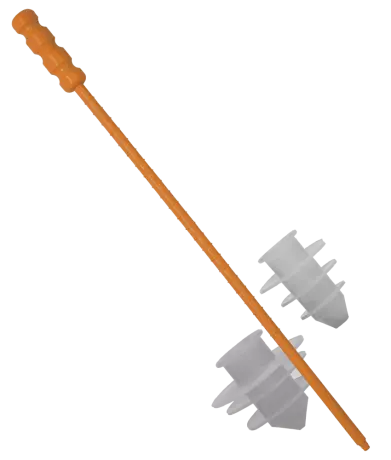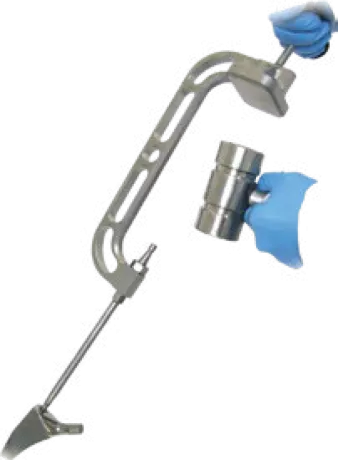
Cement stopper single use complete set
Cement stopper TPA-18 + TPA-24 Tecres cement stoppers seal the medullary cavity, preventing cemen...
Portal and digital medical technology fair of the largest MedTech cluster in Germany

Cement stopper single use complete set
Cement stopper TPA-18 + TPA-24 Tecres cement stoppers seal the medullary cavity, preventing cemen...

Xtract-All® Hip Universal Hip Stem Removal...
The Xtract-All® Hip Universal Hip Stem Extraction System is designed for the removal of well fix...

Metal hip prostheses are the most common type of implant. They are cemented to the bone and are covered with a plastic liner to promote bone growth. The most common hip replacement device is the stemless metal hip prosthesis. It is usually used to replace a worn or cracked implant. The stemless type of replacement allows the user to move freely and is also more durable. The stemless type of hip prosthesis is often used in the case of older patients.
The ball portion of a hip prosthesis is typically made of a metal or ceramic component. It is attached to the head of the femur with a titanium screw. A metal or ceramic ball is attached to the head of the shaft. The ball portion is cemented to the bone. The stem portion is not cemented. It is held in place by the bone, which is fixed to the prosthesis with a screw.
Despite their complexity, hip prostheses are highly effective. While a single surgery can result in permanent damage, the implant can last up to fifteen to twenty-five years. The life expectancy of a hip prosthesis is increasing. Many people are able to return to their active lifestyles, even after a single operation. The long-term stability of a hip prosthesis is also crucial. The longer a patient can live without pain, the greater the chance that the prosthesis will remain in place and work properly.
The risk of dislocation is high in the first few months after surgery. However, the risk is minimal. Surgical experts can perform a closed reduction to bring the ball back into the socket. If the hip prosthesis becomes loose, it can cause pain or lead to another surgery. A hip replacement may be more expensive and more invasive than a traditional hip replacement. And if the implant is not secured properly, it could lead to an infection.
Some prostheses have a high risk of dislocation. Most patients experience dislocation within the first three months of implantation. In addition, the implant can become loose and fall out of the socket. While this is rare, the implant can be painful. The patient should avoid strenuous physical activity and avoid activities that could cause discomfort. The patient should be resting while using the prosthesis, since the surgery will cause the pain.
The DePuy ASR Acetabular System was approved under the 510(k) process by the FDA in 2009. The FDA claimed that the implant was substantially equivalent to the predicate devices. Earlier models of all-metal hip prostheses were recalled after the high risks of revision surgeries. In addition to metal implants, titanium is the most popular material for prostheses. Its safety is also very high, so it is important to ensure that a patient has a hip replacement before surgery.
Become a digital exhibitor yourself in the online portal of the largest and best-known MedTech cluster region in Germany and inform the world of medical technology about your products and services as well as about news, events and career opportunities.
With an attractive online profile, we will help you to present yourself professionally on our portal as well as on Google and on social media.